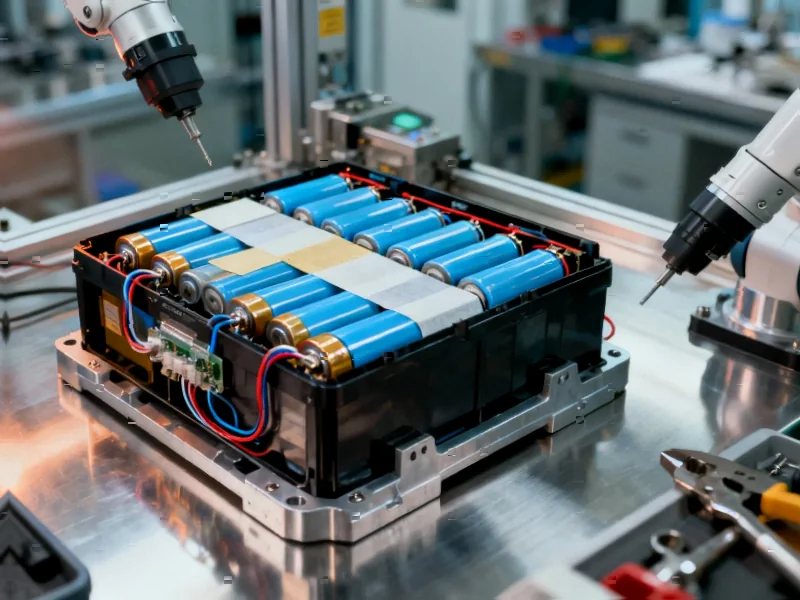Breakthrough in X-Ray Spectroscopy Technology
A new high-performance precision germanium diffracting crystal has been honored as one of the ten best microscopy innovations in the 2025 Microscopy Today Awards, according to reports from the development consortium. The crystal, developed through collaboration between Concord University, Rigaku Innovative Technologies, and Advanced MicroBeam, Inc., represents what analysts suggest could be a transformative advancement for wavelength-dispersive spectrometers used in microanalysis applications.
Table of Contents
Technical Specifications and Manufacturing Innovation
The Rigaku Innovative Technologies Ge crystal is described as a high-performance, single crystal, Johansson-type diffracting element specifically engineered for wavelength-dispersive X-ray spectrometers (WDS). Sources indicate these instruments are commonly employed in Electron Probe Micro Analysis (EPMA) and X-ray Fluorescence (XRF) systems.
Manufactured from high-purity, semiconductor-grade germanium, the crystals reportedly benefit from a unique production process that uses elastic bending to eliminate lattice distortions typically caused by conventional bent crystal manufacturing techniques. The report states this approach also produces exceptionally high-quality crystal surfaces, resulting in significantly improved X-ray focusing precision that leads to enhanced spectral resolution and intensity for end-user applications.
Performance Advantages Over Traditional Materials
According to technical reports, the Ge <111> crystals designed for EPMA offer a spectral range similar to PET crystals but are somewhat shifted toward shorter X-ray wavelengths and higher energies. Analysts suggest they provide superior analytical performance compared to traditional LiF and PET crystals in critical aspects including intensity, peak-to-background ratio, predicted detection limits, peak widths, and the ability to separate closely spaced X-ray lines.
Perhaps most significantly, sources indicate the precision Ge <111> crystal enhances both intensity and resolution simultaneously compared to LIF—addressing what has traditionally been a fundamental trade-off in WDS analysis. Under identical EPMA test conditions, the report states the Ge <111> crystal produced over double the intensity of LIF for iron (Fe) and cobalt (Co) while also resulting in much narrower line widths.
Field Test Results and Practical Applications
In field testing conducted on an ARL SEMQ electron microprobe, researchers reportedly observed that removing additional masks from the detector slit resulted in a significant increase in intensity by approximately 70% with only minor compromise on resolution. Further testing revealed even more dramatic improvements in specific applications.
In trace barium analysis using the La line, detection limits with the Ge <111> crystal were reportedly nearly three times lower than those obtained with LIF under the same acquisition parameters. The crystal also demonstrated significant reduction of potential interference from nearby titanium Kα lines, according to the test results.
Impact on Trace Element and Rare Earth Analysis
The development comes at a critical time for trace-element analysis, which has become increasingly prevalent in EPMA applications. Analysts suggest this crystal technology could substantially improve analytical performance, particularly as demand for trace element applications continues to rise.
The report highlights that the Ge <111> crystal effectively eliminated higher-order interferences from rare earth element L-lines in EPMA testing for thorium and uranium in monazite—a capability that could prove invaluable given the growing importance of REEs in high-tech applications and concerns about supply chain security.
Natural REE materials typically consist of mixtures of these elements, and the L-lines used for their analysis in X-ray spectroscopy are complex and closely spaced, often resulting in spectral interferences that complicate accurate quantification. Sources indicate the use of the Ge <111> crystal may mitigate these challenges, thereby supporting both the development of REE materials and the exploration of new REE resources.
Broader Implications for Analytical Science
Most applications involving X-ray-based analysis of elemental abundances utilize instruments such as EPMA, benchtop XRF, and synchrotron XRF. In these contexts, Germanium <111> reportedly outperforms more commonly used diffracting elements like PET and LIF, particularly for trace element quantification and situations where X-ray spectral overlaps pose challenges.
According to the development team, the crystal represents not just an upgrade to existing technology but what they characterize as a transformative leap that promises to redefine analytical possibilities in elemental analysis. The technology is positioned to enable observation of finer-scale patterns in X-ray spectra while serving as a viable substitute for PET or LIF in suitable spectral ranges.
High-performance Si <111> and Si <222> crystals produced using a similar method are also reportedly available, with other crystallographic orientations and materials available from Rigaku Innovative Technologies upon request, according to company statements.
Related Articles You May Find Interesting
- Oracle Stock Faces Investor Scrutiny Amid AI Expansion Costs, Portfolio Alternat
- Nvidia Backs Battery Recycler’s $350M Boost for AI Data Center Power Solutions
- Decoding Etna’s Secrets: How Earthquake Patterns Reveal Volcanic Activity Months
- Samsung Galaxy S21 FE Receives Final Major One UI Software Upgrade
- Adlice Protect Emerges as Next-Generation Security Solution with Proactive Malwa
References
- http://en.wikipedia.org/wiki/Miller_index
- http://en.wikipedia.org/wiki/Electron_microprobe
- http://en.wikipedia.org/wiki/Rigaku
- http://en.wikipedia.org/wiki/Diffraction
- http://en.wikipedia.org/wiki/Microscopy
This article aggregates information from publicly available sources. All trademarks and copyrights belong to their respective owners.
Note: Featured image is for illustrative purposes only and does not represent any specific product, service, or entity mentioned in this article.



